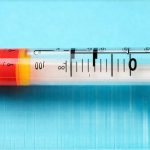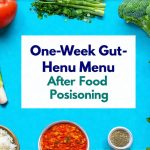Food poisoning, unfortunately, is a fairly common experience. Most cases are mild and resolve within a few days without requiring professional medical intervention. However, even a mild case can be profoundly unpleasant, with nausea often being the most debilitating symptom. Understanding how to manage this nausea effectively can significantly improve your comfort during recovery and prevent dehydration. It’s important to remember that self-care is focused on supportive measures; recognizing when symptoms escalate or persist warrants medical attention. This article will focus specifically on navigating mild food poisoning episodes, emphasizing strategies for mitigating the discomfort of nausea while allowing your body to naturally recover.
The key to managing nausea during mild food poisoning isn’t about ‘fighting’ it directly but rather creating an environment where your digestive system can calm down and begin to heal. This means focusing on gentle rehydration, avoiding further irritation, and understanding the physiological reasons behind the feeling of sickness. Nausea is a protective mechanism – your body is attempting to rid itself of whatever caused the upset. Trying to suppress it completely isn’t always helpful; instead, we aim to lessen its intensity and prevent secondary complications like dehydration. Remember that this guide addresses mild cases where symptoms are primarily nausea, potentially with some mild vomiting or diarrhea, without high fever, severe abdominal pain, or signs of neurological involvement – these require prompt medical attention. Perhaps you’re recovering from digestive recovery and need help navigating the aftermath.
Understanding the Root Cause & Initial Steps
Nausea during food poisoning stems from your body’s reaction to toxins produced by bacteria, viruses, or parasites present in contaminated food. These toxins irritate the digestive tract, triggering a cascade of signals that lead to feelings of sickness and the urge to vomit. The intensity can vary depending on the type of contaminant, the amount consumed, and individual sensitivity. Initial steps are crucial for minimizing discomfort and preventing complications. Prioritizing rest is paramount. Your body needs energy to fight off the infection and repair itself. Avoid strenuous activity and aim for a quiet, comfortable environment.
Beyond rest, immediate hydration is essential. Vomiting and diarrhea deplete fluids rapidly, leading to dehydration which can worsen nausea and other symptoms. However, simply gulping down large amounts of water can sometimes exacerbate the feeling of sickness. Instead, begin with small, frequent sips – perhaps a tablespoon every 15-20 minutes. Electrolyte solutions (available over-the-counter) are ideal as they replace lost minerals alongside fluids, but if you don’t have access to these, water is still the best option. Avoid sugary drinks like juice or soda, as these can sometimes worsen diarrhea. Consider what happens during soft stool episodes if you’re experiencing digestive upset.
The first few hours should also involve a very restricted diet – think of it as giving your digestive system a break. Avoid solid foods entirely until vomiting subsides and you can tolerate small sips of fluids without feeling worse. Trying to ‘force’ food down when nauseous will likely only lead to more discomfort and potentially further irritation. This initial phase is about allowing your body to eliminate the offending substance and begin its natural healing process.
Reintroducing Food: A Gradual Approach
Once you’ve been able to tolerate fluids for several hours without vomiting, it’s time to cautiously reintroduce food. The BRAT diet – Bananas, Rice, Applesauce, Toast – is often recommended as a starting point because these foods are gentle on the stomach and easily digestible. However, this isn’t a rigid rule; you can also consider other bland options like plain crackers or boiled potatoes. The key principle is gradual reintroduction. Start with very small portions (a few bites) and observe how your body responds.
- If you tolerate the first small portion without increased nausea, vomiting, or diarrhea, you can gradually increase the amount and frequency of these bland foods over the next 12-24 hours.
- Avoid fatty, fried, spicy, or heavily processed foods as they are more difficult to digest and can trigger nausea.
- Dairy products may also be problematic for some individuals during this phase, as lactose intolerance can be temporarily exacerbated by food poisoning. If you experience cramping episodes after reintroducing foods, consider a different approach.
It’s important to listen to your body; if a particular food doesn’t sit well, stop eating it immediately. Don’t rush the process – recovery takes time, and pushing yourself too hard can prolong the discomfort. Remember that even after nausea subsides, your digestive system may be sensitive for a few days, so continue to choose easily digestible foods until you feel fully recovered. In some cases, stool density fluctuations can occur as the gut recovers.
Ginger & Peppermint: Natural Remedies
Ginger and peppermint have long been recognized for their anti-nausea properties. Ginger contains compounds called gingerols and shogaols, which are believed to help speed up gastric emptying (the rate at which food moves from the stomach to the small intestine) and reduce nausea. Peppermint, on the other hand, has muscle-relaxing properties that can help soothe the digestive tract. Both can be incorporated into your recovery plan in various ways.
- Ginger: You can sip ginger ale made with real ginger (avoid those containing artificial flavors), chew on a small piece of crystallized ginger, or drink ginger tea. Freshly grated ginger added to hot water is also effective. However, start with small amounts as excessive ginger intake can sometimes cause heartburn.
- Peppermint: Peppermint tea is a gentle and soothing option. Peppermint candies (sugar-free are preferred) can also help settle the stomach, but avoid them if you experience acid reflux. Peppermint essential oil can be used in aromatherapy – inhaling a few drops of diluted peppermint oil may provide some relief.
It’s important to note that these remedies aren’t a cure, but they can help manage symptoms and make you feel more comfortable. They are best used as complementary therapies alongside rehydration and a bland diet. Always check with your doctor if you have any underlying health conditions or are taking medications before using herbal remedies, as they may interact with certain drugs. Understanding the connection between food poisoning and nausea is the first step to recovery.
Preventing Dehydration & When to Seek Medical Attention
Dehydration is the most significant risk associated with food poisoning, even mild cases. The combination of vomiting and diarrhea can quickly deplete essential fluids and electrolytes. Monitor your urine color – pale yellow indicates good hydration, while dark yellow or amber suggests dehydration. Other signs include decreased urination, dry mouth, dizziness, and fatigue. Continue to sip fluids regularly throughout the day, even if you aren’t feeling thirsty.
Seek medical attention immediately if you experience any of the following:
- High fever (over 101°F / 38.3°C)
- Severe abdominal pain or cramping
- Bloody stools or vomit
- Signs of neurological symptoms, such as blurred vision, muscle weakness, or difficulty speaking
- Inability to keep down fluids for more than 12 hours
- Persistent dehydration despite attempts at rehydration
These symptoms could indicate a more serious infection requiring medical intervention. Remember that this article focuses on managing mild food poisoning episodes; if you have any concerns about your health, always consult with a healthcare professional. If you’re experiencing discomfort during winter low-movement months, seek medical attention promptly. Food poisoning can be unpleasant, but with proper self-care and timely medical attention when needed, most people recover fully within a few days.


















